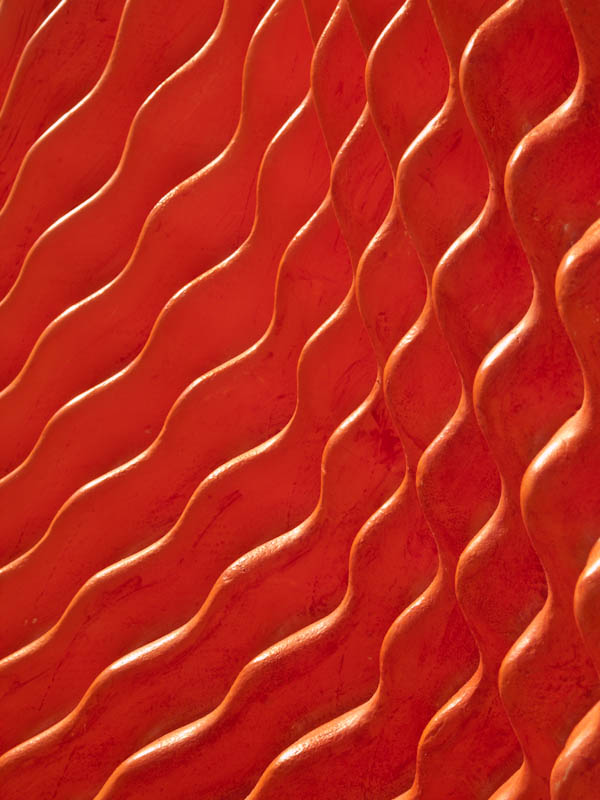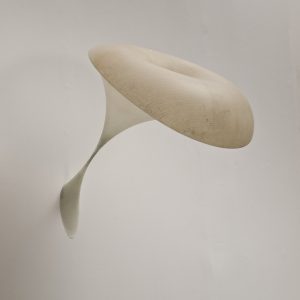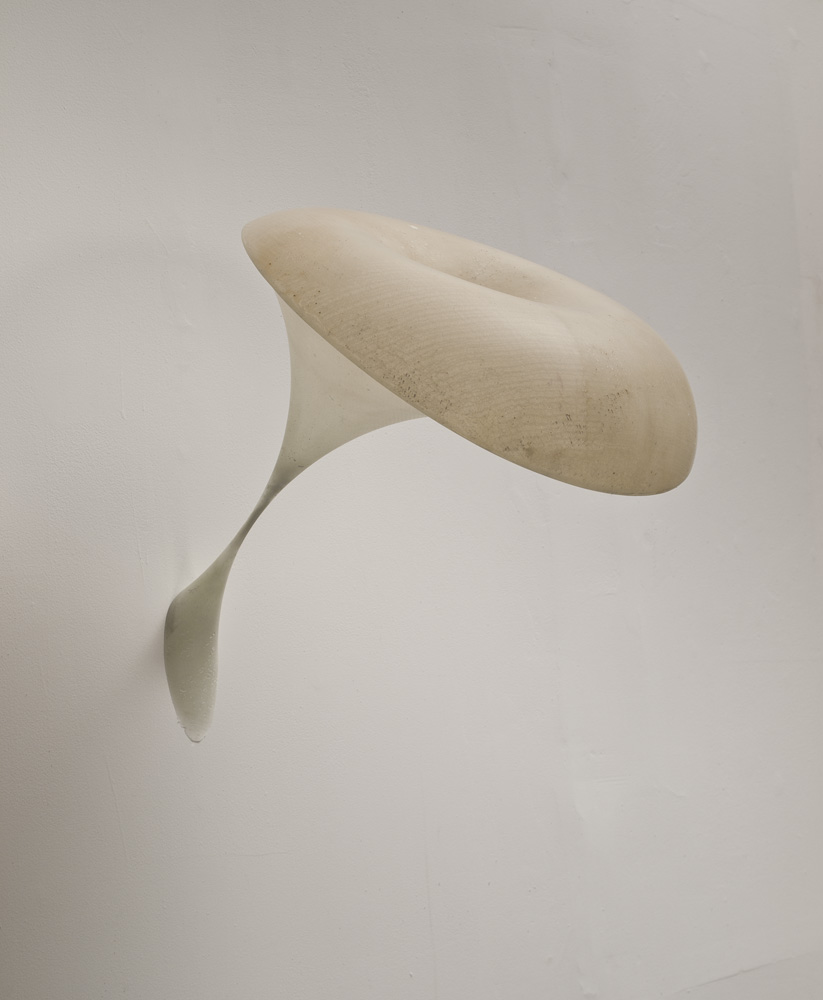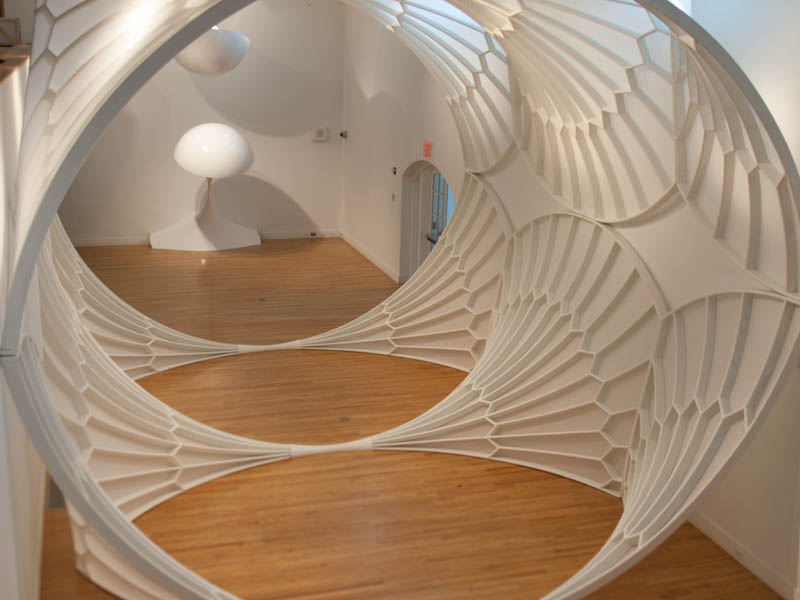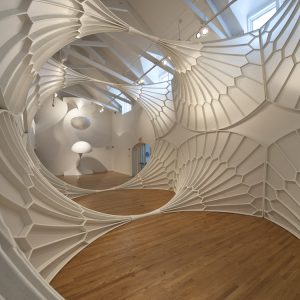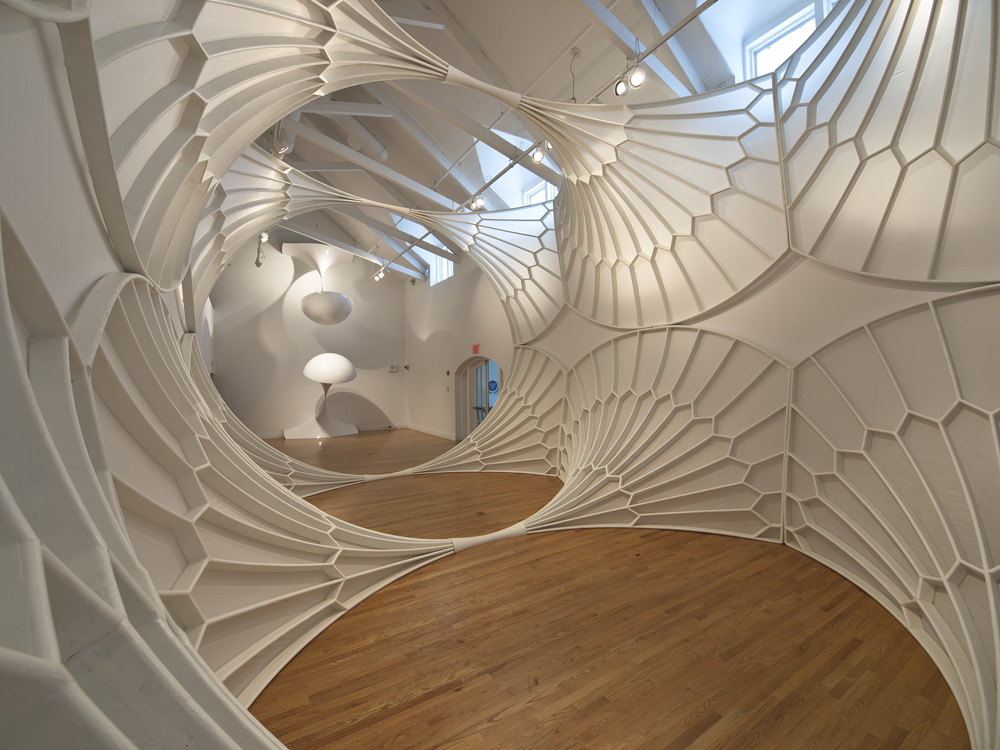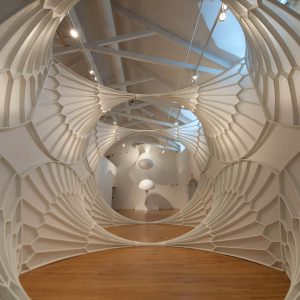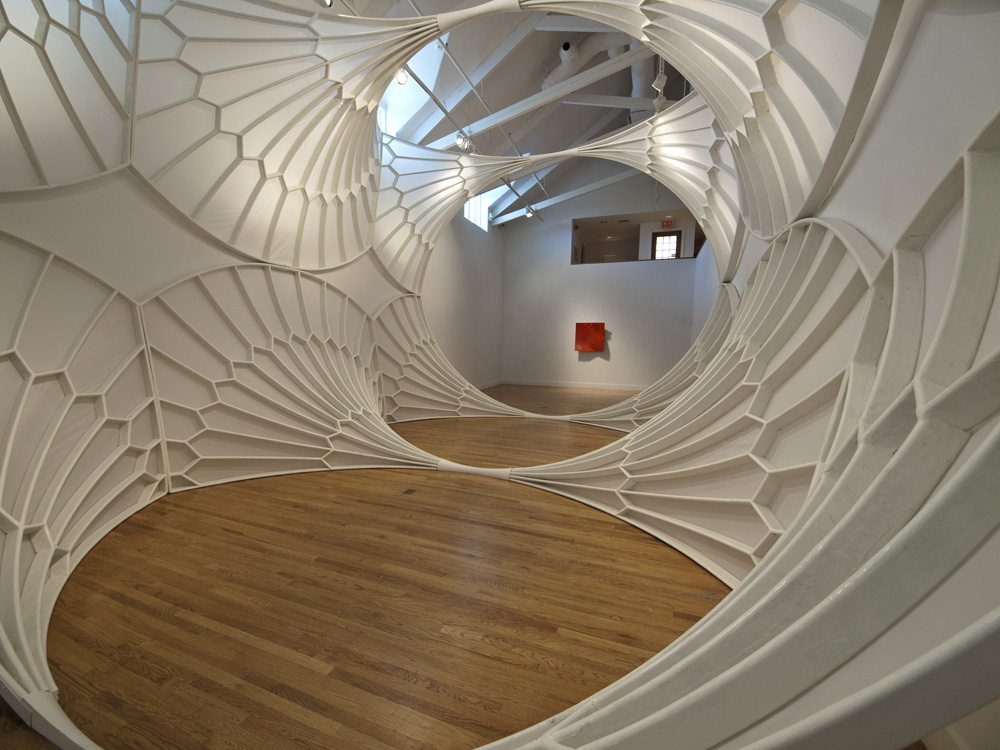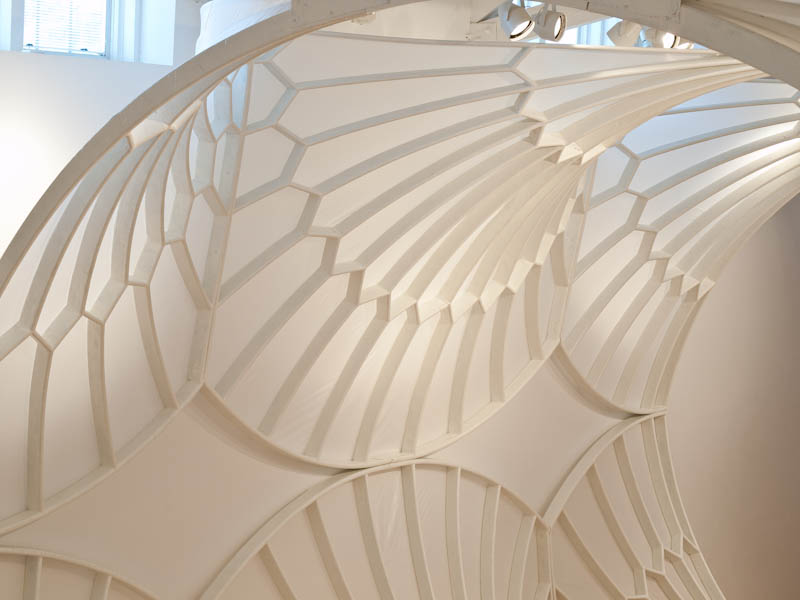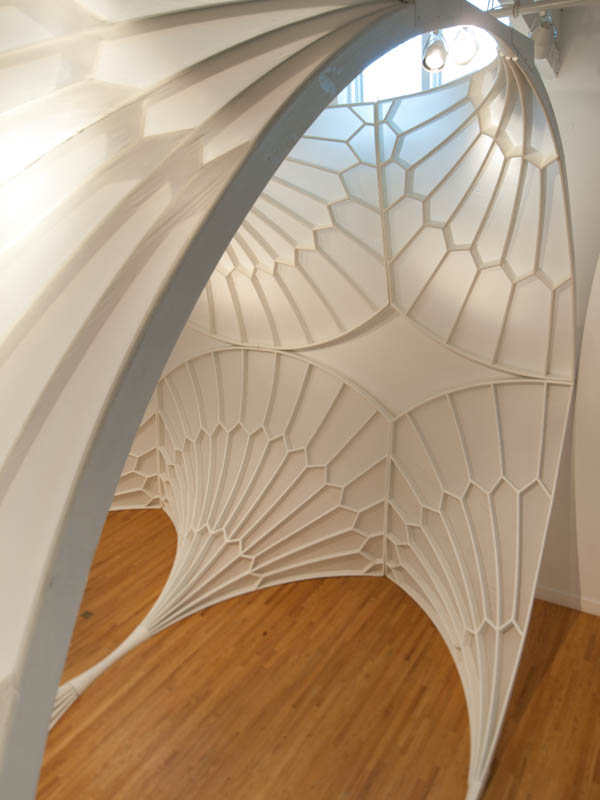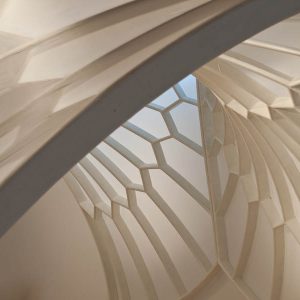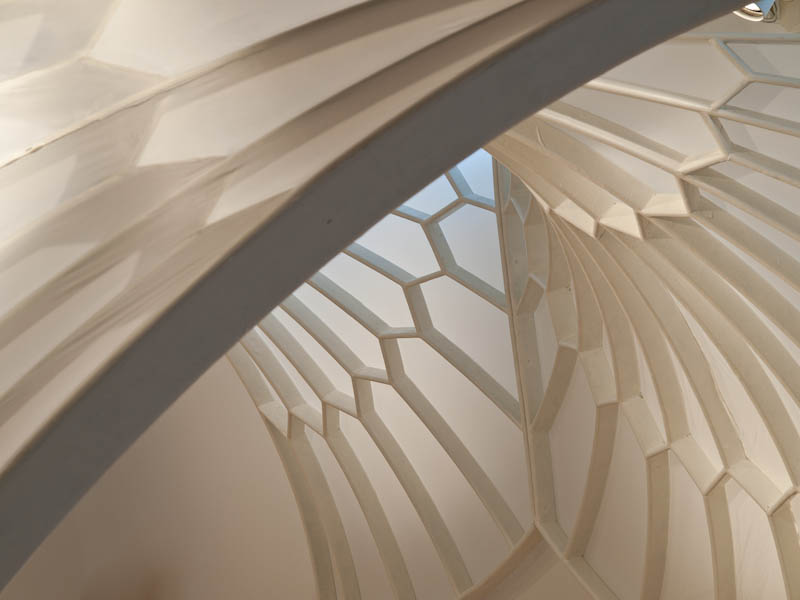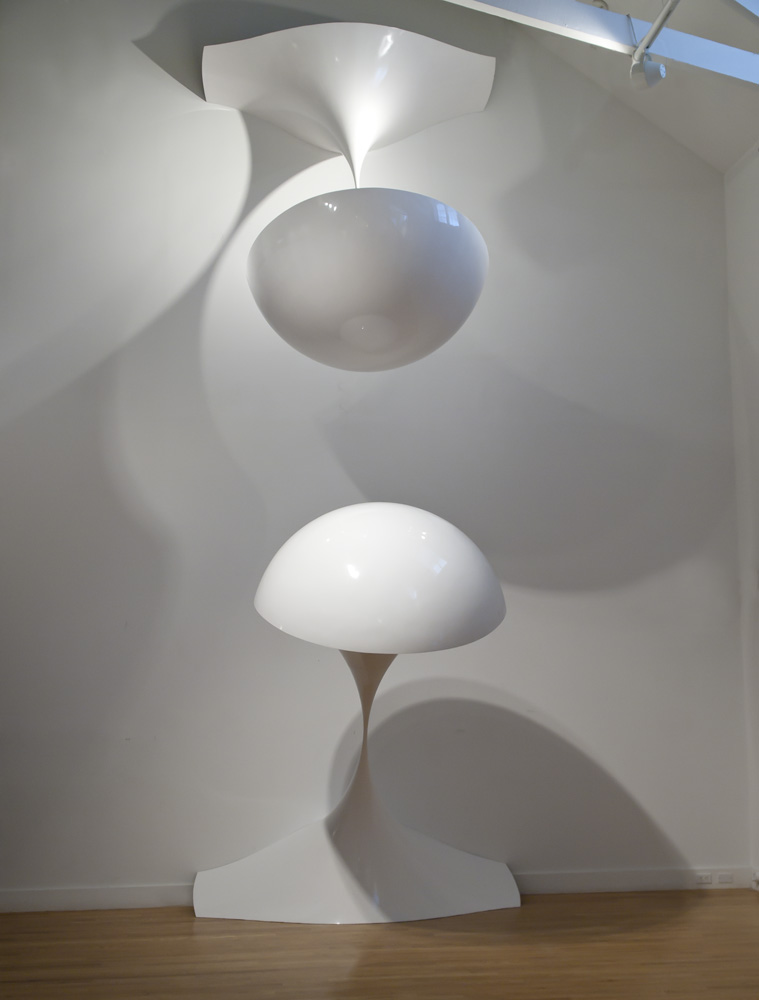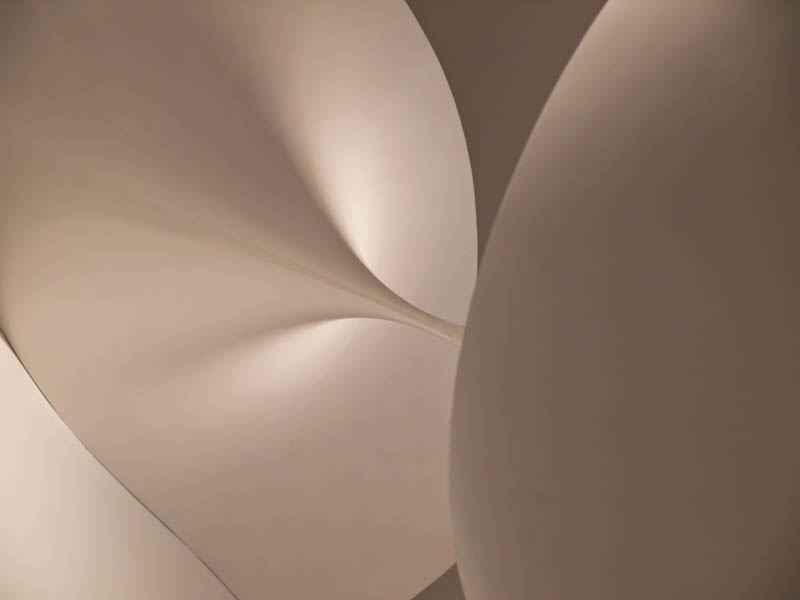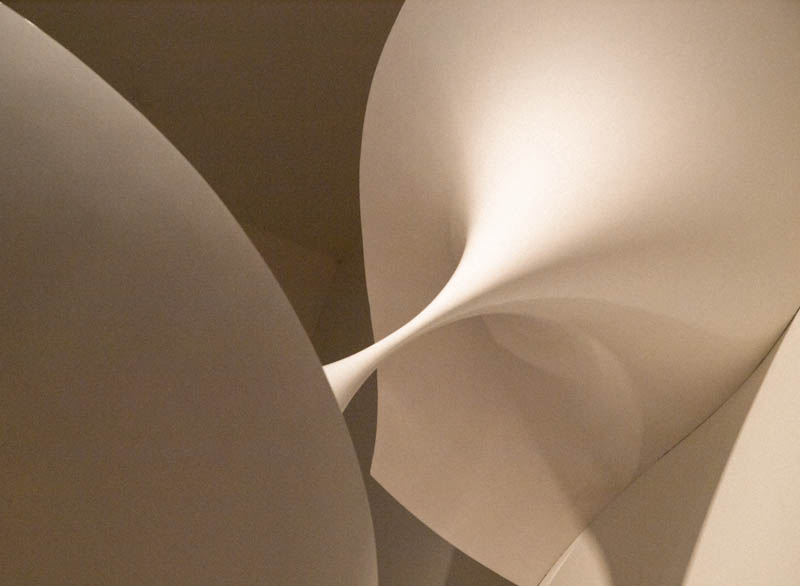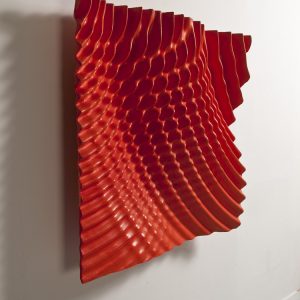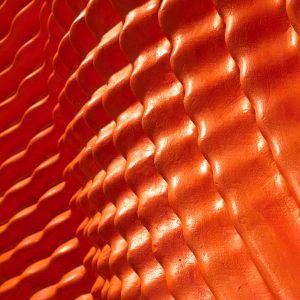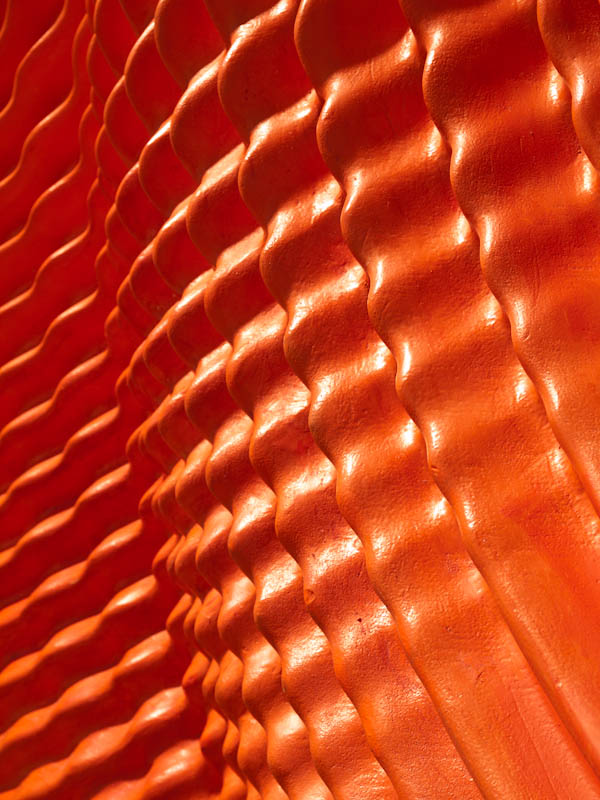David Henderson doesn’t have the budget of an Anish Kapoor or a Richard Serra, which is fine by him, because he is more interested in ingenuity than perfectionism. In lieu of Big Sculpture’s industrial-strength piety, Henderson gives us the DIY proficiency, and perhaps the true religion, of the backyard rocket scientist.
A predecessor, the 15th century stonemason, masterminded the ultra-gothic fan vaulting of Bath Abbey, the inspiration for this show’s centerpiece. Henderson’s A Brief History of Aviation soars in emulation, while rotationally fulfilling his model’s totalizing conic scheme. Both are acts of worship rather than objects of religiosity; daring and open-ended invention define their character rather than monumentalism and containment.
Henderson’s ingeniously practical feat of spatial draftsmanship reverts English Perpendicular with its original spirit, consistent with his own longstanding investigation of curved sculptural surfaces, as epitomized by The Glorious First of June at the gallery’s entrance. That work stands as a culmination of a large body of carvings and castings of toroid voids, hyperbolic mirror joinery, and hourglass wormholes, all derived from the compound circular sweeps of a homemade lathing rig. (Likewise, the masons engineered astonishing webs of stone from compasses and string.) First of June vibrates with overtones, and undertones, of the music of the spheres, including relativistic glissandos and black hole fermatas. Its spectral white gleam approaches the finish fetish of an evaporating Robert Irwin disc, while its skeletal exaggeration suggests Henry Moore’s druidic bone-craft combined with the cartilaginous vision of Lee Bontecou.
First of June’s twin globules, one hanging down and out, one protruding up and at you, cannot possibly be weightless enough not to shatter their thin, bouncing stems, or else the stems cannot possibly be strong enough. This feat of materials engineering fascinates, and the inquisition of limits–Henderson’s gamesmanship with balance and distention–connects this work to the post-minimal irony of Tom Friedman’s chewing gum filaments and Charles Ray’s rope tricks of ink. Irony inheres, too, in Henderson’s embrace of science and mathematical beauty by way of titles that lead from thoughts of cathedrals, astrophysics and flight to their concomitant technologies of warfare. (The Glorious First of June refers to an 18th century naval standoff, reinforcing the hint of fighter jets in the sculpture’s wasp-like forms and carbon fiber sheen.)
Henderson, for all the hands-on aura of his work, has long used computers, first for spitting out equations to minimize waste cutting, later to visualize ideas in virtual space. In seeking to sculpt the concentric patterns of interfering waves, Henderson has recently gone further, acquitting himself of shop-scale digital milling. Re-echo is the agreeably precisionist result, but it turns out to have been laboriously hand finished, and it was designed by duping bump mapping software with digital painting, rather than by 3-D wave modeling proper. The computer, thus, is just another tool that Henderson is liable to misuse as creatively as a jigsaw rigged to a turntable–which is how the great arcs of A Brief History were cut from styrofoam (after being computer-plotted to buttress precisely against the gallery walls).
Returning to the construction of that work, the foam ribs were next strengthened with a wrap of ultralight aircraft-grade fiberglass. Once the skeleton was assembled, a special fabric, more ultralight technology, was heat-shrunk to skin its cornucopial mesh, as rice paper is doped to a balsa wood Fokker. (Be sure to visit the upper balcony to get the inside-out, down-the-rabbit-hole view.)
The six connector elements which visually bundle the springing ribs along the floor and suspended top plane are, naturally, iterations of Henderson’s hourglass toroidals, and here let us acknowledge their undeniable ancestor, Brancusi’s Bird in Space. This seminal work of Modernist abstraction caused Leo Steinberg to wax like Hart Crane:
The trail of the projectile is, after all, as real as the object flung.
Henderson does seem dedicated to bringing to cognition the shape of space implicit in movement, and his work hovers between topological curiosity and cosmic epiphany (with reasonable doubts along the way, as noted). The mutual permeability of waves explored in Re-echo, for example, might be a physics experiment or a lesson from the Upanishads. Like Brancusi, Henderson imbues each work of sculpture with concretized mystique, harmonizing its web of referents without being caught in them. And he does this in distinct opposition to the industrial gigantism of more prominent descendants of the Romanian master. An argument could be made that Henderson’s version–his can-do, human-scaled inquisitiveness–is really what the world needs now.

